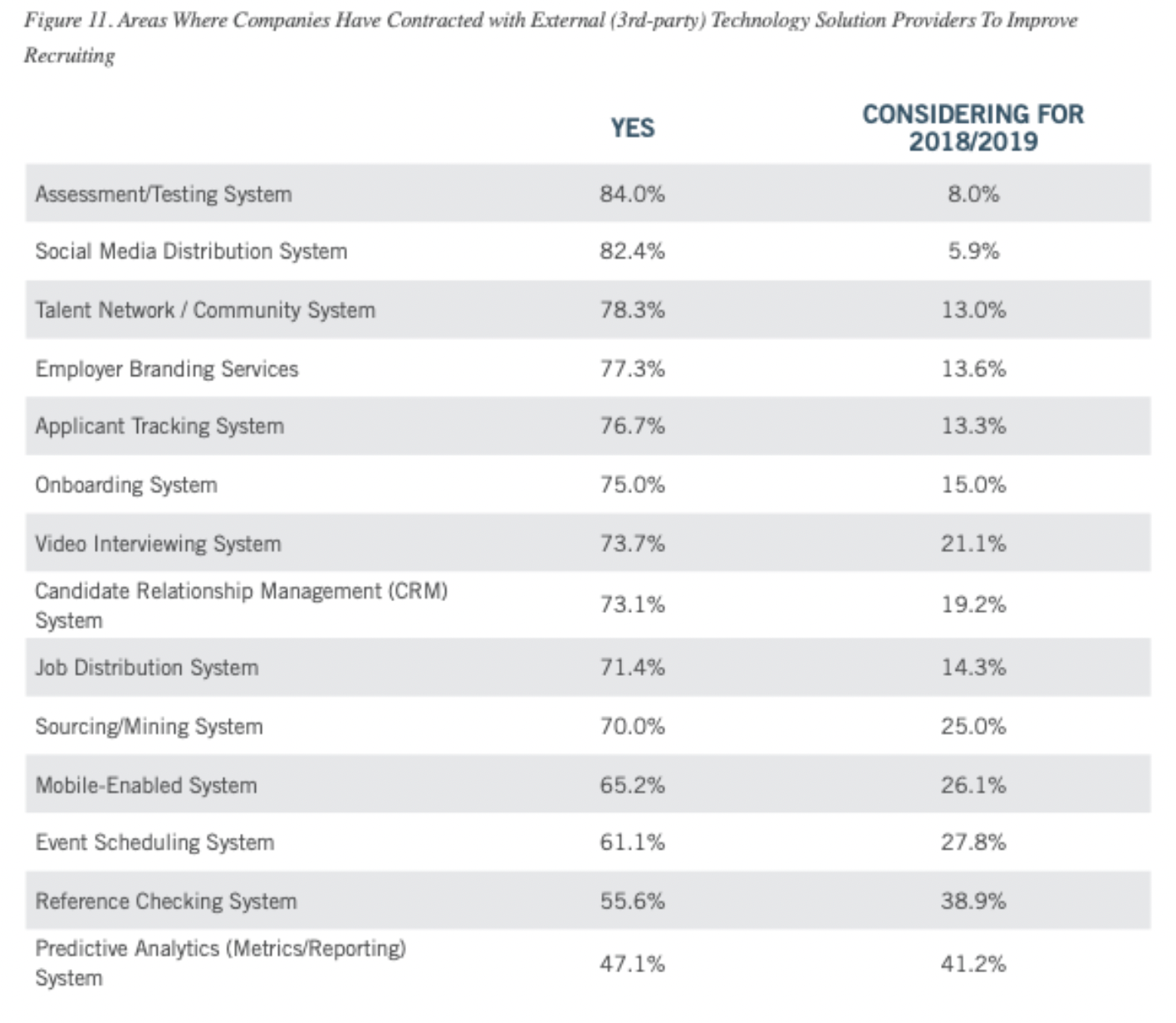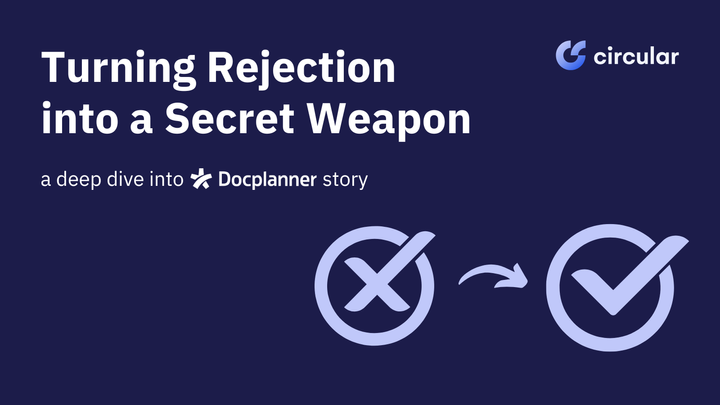Improving Candidate Experience during the Application Process
Candidate Experience starts even before the application stage, However, the application stage is key in candidate experience, and therefore for the business's bottom line. How to improve Candidate Experience during the Application Process?

Candidate Experience starts even before the application stage. Often, it has to do with awareness (when candidates discover your employer brand), consideration and interest (when candidates research your company and it becomes their preferred employer), and even applicants’ previous relationships with the brand.
However, the application stage is key in candidate experience, and therefore for the business’ bottom line.
The ERE shares a case study where a particular company had a 75 percent applicant drop-out rate, meaning that out of 100 people who start an application, only 25 become applicants. Many companies are aware of this phenomenon and try to make the application process as pleasant as possible for the applicant.
Learn how to improve these numbers with a positive candidate experience during the application process.
Understand the real needs
Having a clear vision of the company’s needs will guarantee a better candidate experience. Very often, the following requirements and characteristics are given by the hiring manager:
Skills. Identification of the skill set for the position to be filled and what profile would be best to cover it.
Salary range. It is very important to set a salary range that is competitive. You can find our salary benchmark report for Madrid startups here.
Type of employment contract and responsibilities. It is key to understand exactly what kind of position the hiring manager wants to cover, so that their needs can be well communicated to potential applicants.
Having the above points clear will make the application process more efficient for the recruiter or HR manager.
Write a job description
When it is time to open the position for applications, you may find yourself wondering how to write a job description that will bring you the highest number of talented applicants.
Keep reading to learn how to write a job description thatimproves candidate experience.
Starting points:
Job description style: make sure the style you choose is aligned with your employer brand. If you use a casual tone on the company website, forget about writing the description using very formal language, as this will generate confusion for the applicants and they won’t know what to expect.
Language: create unique experiences by giving applicants the opportunity to choose between different languages. This way, they will feel more comfortable during the application process and will feel like they can show the best version of themselves. Before closing the door on candidates who don’t have the same mother tongue the company does, remember that many good candidates are keen to work in a different language than their native one. Also, use inclusive language in your communications. Remember that this is language that aims to avoid discrimination based on gender, culture, race, age, sexual orientation, etc. Learn more about this here.
Mobile-friendliness: according to the Talent Board Research Report, 72.7 % of employers offered mobile apply in 2018, a decrease of 12.2 % from 2017. Although only 24.4 % of candidates said they applied via mobile, this was still a 46% increase in comparison with 2017.
Job description structure:

Company Introduction
Start the job description with a brief introduction of the company.
- What is the company doing? Explain the product or service.
- Who do you do it for? Here would be a good place to talk about the target customers or audience.
- Where are you delivering? Mention the markets where the company is active and if there are any plans to open a new market soon.
- Who is working in the company or on the relevant team? Give a quick team introduction, state the size of the company, and mention the team or department where the candidate is going to work. Founder and manager names can sometimes make a difference.
Role Introduction
- Who will they be working with? Now it is the right moment to explain who the candidate will be working closely with on a daily basis.
- What will they be doing? Explain the main daily, weekly, and long-term responsibilities. Make sure these are completely transparent to avoid setting the wrong expectations. In the end, you also want to find the most suitable fit for the role.
- Where will they fit in the organization? Mention the impact of the role has in the company, its strategic importance, and the career possibilities within the organization, if relevant.
Role Requirements
- What is the ideal candidate like? List the soft skills and values required for the role. This is a great opportunity to share some aspects of the company’s culture.
- What are the requirements for the role? Highlight the seniority and the experience needed regarding tools, products, specific industries, etc. Add the academic background and languages required. Don’t forget to categorize each as optional or required.
Company Perks
What do you offer as a company? Company perks are one of the reasons behind why candidates choose one company over another. It helps to have some tangible benefits that differentiate your business from the rest.
Contract: define the type of contract the company is offering. Is the contract permanent, temporary, part-time, full-time? Not everyone has the same availability. Make this point clear so applicants know what to expect before applying.
Location: talk about where the office is located, what it looks like, and what it is near (i.e. restaurants, gym, parks, the sea, etc.).
Remote-friendly: according to Fundera, “68% of millennial job seekers said a work from home option would greatly influence their interest in working for a company.” If your organization is remote-friendly or if you are open to discussing it, this can be a win-win.
Salary range: PayScale mentions in an interesting article that “companies see an increase in candidates by 30 percent if they include wage information in their job ads.” Many applicants admit to being turned off on completing an application process if the job description doesn’t include the salary range. It doesn’t need to be exact– a salary range is good enough. Avoid saying things like “competitive salary” or “salary to be agreed”.
Compensation package: this is the right time to explain what extras the candidate can expect like meals, health insurance, stock options, promotions and discounts, etc.
Post the job description
Recruiters and hiring managers turn to formal job sources or informal ones to find the right candidate. Note that formal job sources are job sites, employment agencies, job ads, campus recruitment, public employment services, recruitment events, etc., while informal job sources would be things like talent pools, rehires, networking, and hiring communities like Circular.

As we already mentioned in our blog post “Candidate Rejection and the Candidate Experience”, Butler University shows in their case study that higher quality applicants, with higher chances of job-search success, are more likely to rely on informal sources in their job search. For example, Ullman suggested that “employee referrals were an effective recruiting source because the friends of employees know more about the company in advance and are almost pre-sold on it if they decide to apply.”
Informal sources provide more accurate and specific information about what the job entails than formal sources (Breaugh, 2008). This allows job seekers to apply for jobs that better fit their interests and skills as well as to submit better-prepared applications. This will therefore increase the likelihood of positive employment outcomes. In addition, a substantial proportion of job opportunities are never communicated through formal sources, so if job seekers do not include informal sources in their search, they might not even be aware of these vacancies and hence cannot apply for them (Granovetter, 1995).
Also, job seekers that use informal sources are different from those who use formal sources (Williams et al., 1993). These preexisting differences could then explain the differences in employment outcomes between formal and informal job sources. Job seekers who relied more on themselves in their job search made more use of informal job sources. Note that job seekers applying through informal sources had higher biographical inventory scores than applicants coming from formal sources. These results suggest that higher-quality applicants, with higher chances of job-search success, are more likely to rely on informal sources in their job search. Informal job sources are more likely to produce better outcomes when higher-quality sources are used (e.g., contacts with high-level jobs rather than low-level jobs).
Improve your job application
Did you know that…
48% of applicants drop out due to complicated ATS systems (Potentialpark)
70% of hiring companies force job seekers to apply through complicated career sites but fail to acknowledge their applications with an email or letter (Talent Board)
According to the ERE, 15% of job applicants would “immediately switch to another brand if they had a positive candidate experience when applying for a role at that company.” This produces two main benefits:
- A reduction in cost per application. A very satisfied candidate will apply again, thereby reducing CpA, and will most likely refer others, too.
- A boost in the employer brand and possibly the public recognition, so the volume of new applications increases.
Make the job application easy for candidates. Avoid candidate drop-out along the application process by making the process smooth. Slow speed to hire is one of the main reasons why candidates decide to abandon the process.

Offer mobile apply. Even though only 14 percent of candidates applied via mobile devices according to The Talent Board, 91 percent of employers still offer this possibility.
Show candidates their application percentage completed. Adding an indicator that tells candidates how far through the application process they are will help them choose the right moment to apply. It will also prevent them from leaving the application process half done.
Give them the option to save their application as a draft. In an ideal world, candidates take the decision of applying, go through the application process, and execute it with success. However, as we mentioned before, there are some cases where candidates are not able to finish the process in one sitting. If they can go back to a draft version, they will feel more motivated to continue the process than if they have to start over from scratch.
Follow up
According to a Talent Board survey, in 2018, nearly 66% of candidates received an automated “Thank You for Applying” message. While that may seem like a good figure, it’s actually a 4.6% decrease from 2017.
Applicants have invested time and effort in the application process. Treat applicants with respect and offer them the chance to maintain communication in a comfortable and fast way. For example, Circular gives candidates the possibility to connect through Telegram, email, WhatsApp, and social media.
This is probably a good time to ask for feedback. Ask candidates for their impressions about their experience applying for a position with you and keep striving to improve your application process



